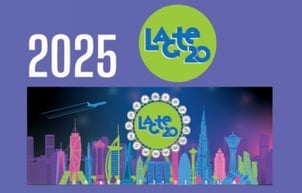The new norm of global web conferencing has made it as easy as never before to connect with global peers and audiences. But when it comes to hosting multilingual conferences online, there are a few common rookie mistakes, that can stand in the way of your success.
Recent posts by Patricia Magaz
4 min read
4 common mistakes to avoid in multilingual online conferences
By Patricia Magaz on October 21, 2021
Topics: Remote Simultaneous Interpretation Interpreters Interpretation Technology Event & Interpretation Support Multilingual Web Conferencing
4 min read
How to make the best web conferencing platforms multilingual
By Patricia Magaz on October 19, 2021
More and more events are being taken online to ensure we can stay connected, keep learning and continue communicating. For businesses, this means finding the most practical and efficient solutions to meet their needs. But with so many options available, what should they choose?
While the rush to digital was hastened by the challenges of the COVID-19 pandemic, the benefits of web conferencing will likely keep many online even after lockdown measures have relaxed. And as businesses scale and grow a global team and client portfolio, there’ll be an increasing demand for real-time translation when the lingua franca fails.
Topics: Remote Simultaneous Interpretation Interpretation Technology Multilingual Web Conferencing
6 min read
Translation, interpretation, captions, subtitles - what's the difference?
By Patricia Magaz on October 13, 2021
In an era of globalization, business communication is reaching across international borders, geographic locations and time zones, and getting closer to barrier-free communication than ever.
As more events leverage digital technologies and hybrid formats, it’s increasingly easy for interested parties to participate in seminars, conferences, meetings, and the like — all in their chosen language. Ultimately ensuring multilingual communication doesn't get interrupted by language barriers.
And it’s all thanks to talents and technologies that allow for translation, interpretation (both simultaneous and consecutive), captioning, and subtitling to take place virtually and manifest locally.
Across the globe, these technologies are transforming how content is delivered and bridging communication gaps. They are enabling greater collaboration, supporting more opportunities to spread knowledge, helping people to pursue new business opportunities, and allowing us all to embrace other cultures.
It’s important to note that these processes all operate independently and are not interchangeable — so getting the most out of them means understanding how each one works and their best use-case scenarios.
In this article, we’re going to look at the differences between translation, interpretation, subtitles, and captioning, and where their best use case is.




.png)

 More download links
More download links



